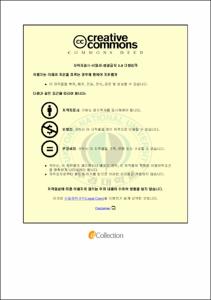여유자유도를 가진 매니퓰레이터의 작업 공간상에서 접촉 힘과 운동 통합 제어
- Alternative Title
- Unified Contact Force and Motion Control of Redundant Manipulator for Operational Space
- Abstract
- The end-effector equations of motion in operational space are a fundamental tool for the analysis ,control, and dynamic characterization of manipulator systems. The end-effector equations of motion are expressed by use of the relationships between its operational positions, velocities, accelerations, and the virtual operational forces acting on it. In This paper, the unified control of manipulator robot's end-effector contact force and motion is presented. For general tasks that involve end-effector motion and contact forces, the motion directions or force directions are selected depending on generalized task specification matrices which can be constant, configuration-varying, or time-varying. The end-effector equations of motion for a redundant manipulator are also established and its behavior with respect to generalized joint forces is explained. The problem of singularities and obstacle avoidance is dealed based on operational space framework.
Simulations are performed on industrial manipulator robot JS-10 which manufactured by KAWASAKI, with realtime dynamics simulator SIMSTUDIO. For simulations, virtual environment and full solid model of JS-10 are created by use of 3d Max and CATIA v5. All of preparatory equations are computed with Robotics Toolbox in MATLAB. The robot control algorithm are coded by C+
- Issued Date
- 2011
- Awarded Date
- 2011. 2
- Type
- Dissertation
- Keyword
- 여유 자유도 작업 공간 힘 운동 통합 제어 매니퓰레이터 로봇
- Publisher
- 부경대학교
- Affiliation
- 부경대학교 대학원
- Department
- 대학원 메카트로닉스공학과
- Advisor
- 안두성
- Table Of Contents
- 제 1 장 서 론 1
1. 1 연구 배경 1
1. 2 연구 목적 2
제 2 장 시스템 구성 및 모델링 3
2. 1 전체 시스템 구성 3
2. 2 모델링 구성 순서 및 방법 4
2. 2. 1 CATIA와 3Dmax를 이용한 모델링 5
2. 2. 2 Matlab Robotics Toolbox를 이용한 모델링 6
2. 2. 3 SIMSTUDIO를 이용한 가상 환경 모델링 8
제 3 장 매니퓰레이터 로봇 운동 방정식 10
3. 1 운동 방정식(Equation of Motion) 10
3. 1. 1 매니퓰레이터 기구학(Manipulator kinematics) 10
3. 1. 2 관절 공간 동역학(Joint Space Dynamics) 14
3. 1. 2. 1 운동 정의(Motion Coordination) 14
3. 1. 2. 2 관절 공간 동적 모델 17
3. 1. 2. 3 운동 에너지(Kinetic Energy) 18
3. 1. 2. 4 위치 에너지(Potential Energy) 21
3. 1. 3 작업 공간 동역학(Operational Space Dynamics) 22
3. 1. 3. 1 관절 공간과 작업 공간의 관계 22
3. 1. 3. 2 말단 효과 장치 운동(Motion of End-effector) 27
3. 1. 3. 3 여유도를 가지는 로봇의 동역학 27
3. 1. 3. 4 동적 분리(Dynamic Decoupling) 31
제 4 장 통합 제어(Unified Control) 33
4. 1 말단 효과 장치 운동 제어(Motion Control) 33
4. 2 특이점에서 운동 제어(Motion Control in Singular) 34
4. 3 여유도를 활용한 장애물 회피(Avoidance Obstacle) 35
4. 4 운동 힘 통합 제어(Unified Motion and Force control) 37
4. 4. 1 선택 행열(Generalized Selection Matrix) 37
4. 4. 2 운동과 힘 제어(Motion and Force Control) 40
4. 5 말단 효과 장치의 빠르고 안정한 접촉 제어(Approach Control) 42
제 5 장 시뮬레이션 44
5. 1 말단 효과 장치 운동(Motion of End-effector) 44
5. 1. 1 3개의 작업 자유도 운동 44
5. 1. 2 6개의 작업 자유도 운동 47
5. 2 특이점에서 운동(Motion in Singular) 49
5. 3 장애물 회피(Avoidance Obstacle) 55
5. 4 운동 힘 통합 제어(Unified Motion and Force control) 57
5. 5 빠르고 안정한 접촉 60
제 6 장 결 론 63
참고문헌
부록
- Degree
- Master
- Files in This Item:
-
-
Download
 여유자유도를 가진 매니퓰레이터의 작업 공간상에서 접촉 힘과 운동 통합 제어.pdf
기타 데이터 / 1.78 MB / Adobe PDF
여유자유도를 가진 매니퓰레이터의 작업 공간상에서 접촉 힘과 운동 통합 제어.pdf
기타 데이터 / 1.78 MB / Adobe PDF
-
Items in Repository are protected by copyright, with all rights reserved, unless otherwise indicated.